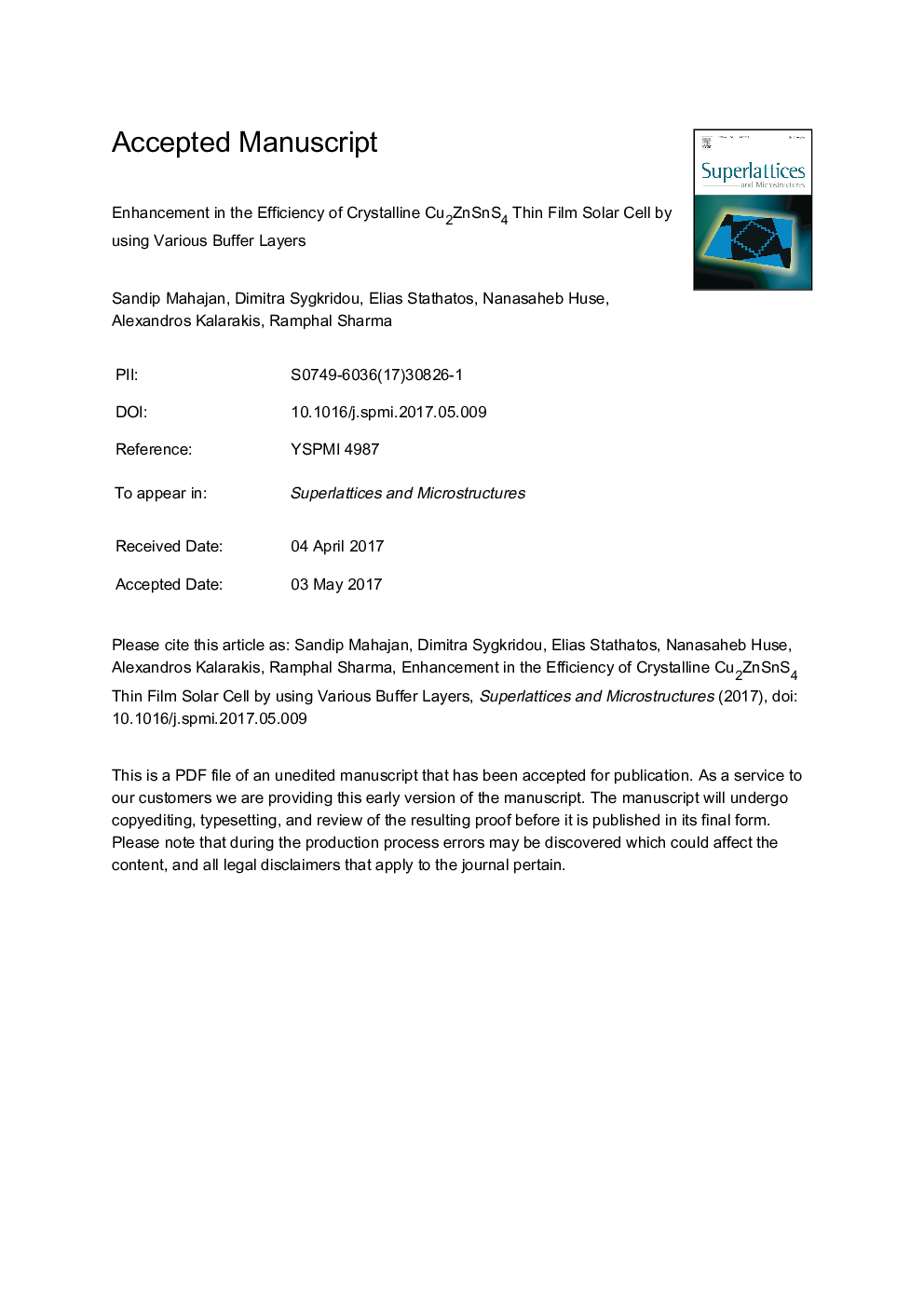| Article ID | Journal | Published Year | Pages | File Type |
|---|---|---|---|---|
| 7940239 | Superlattices and Microstructures | 2017 | 29 Pages |
Abstract
The incorporation of different types of buffer layers has demonstrated to improve the efficiency of Cu2ZnSnS4 (CZTS) thin film solar cells. The materials tested as buffer layers were Cadmium Sulphide (CdS), Zinc Sulphide (ZnS) and Cadmium Zinc Sulphide (Cd7.23Zn2.77S10). The effect of the buffer layer and the absorber layers on the structural, morphological and optical properties of the films was studied. As grown CZTS thin films made with SILAR method were annealed at 550 °C in the sulfur atmosphere for 60 min to improve the crystallinity of the material. X-ray diffraction (XRD) and Raman studies confirm the formation of kesterite structure in CZTS thin film. CdS, ZnS and Cd7.23Zn2.77S10 thin films also confirm crystalline nature with crystallite sizes being 9 nm, 13 nm and 14 nm respectively. Leaf, flower and petalâlike morphologies of CdS, ZnS and Cd7.23Zn2.77S10 thin films respectively have been confirmed by Field Emission Scanning Electron Microscopy (FESEM). The electrical properties of the completed CZTS solar cells were also examined. From the obtained J-V characteristic curves upon illumination of the heterojunction solar cells, we calculated the power conversion efficiency to be 0.76%, 1.00% and 1.24% for the FTO/ZnO/ZnS/CZTS/Ag, FTO/ZnO/CdS/CZTS/Ag and FTO/ZnO/Cd7.23Zn2.77S10/CZTS/Ag respectively.
Keywords
Related Topics
Physical Sciences and Engineering
Materials Science
Electronic, Optical and Magnetic Materials
Authors
Sandip Mahajan, Dimitra Sygkridou, Elias Stathatos, Nanasaheb Huse, Alexandros Kalarakis, Ramphal Sharma,
